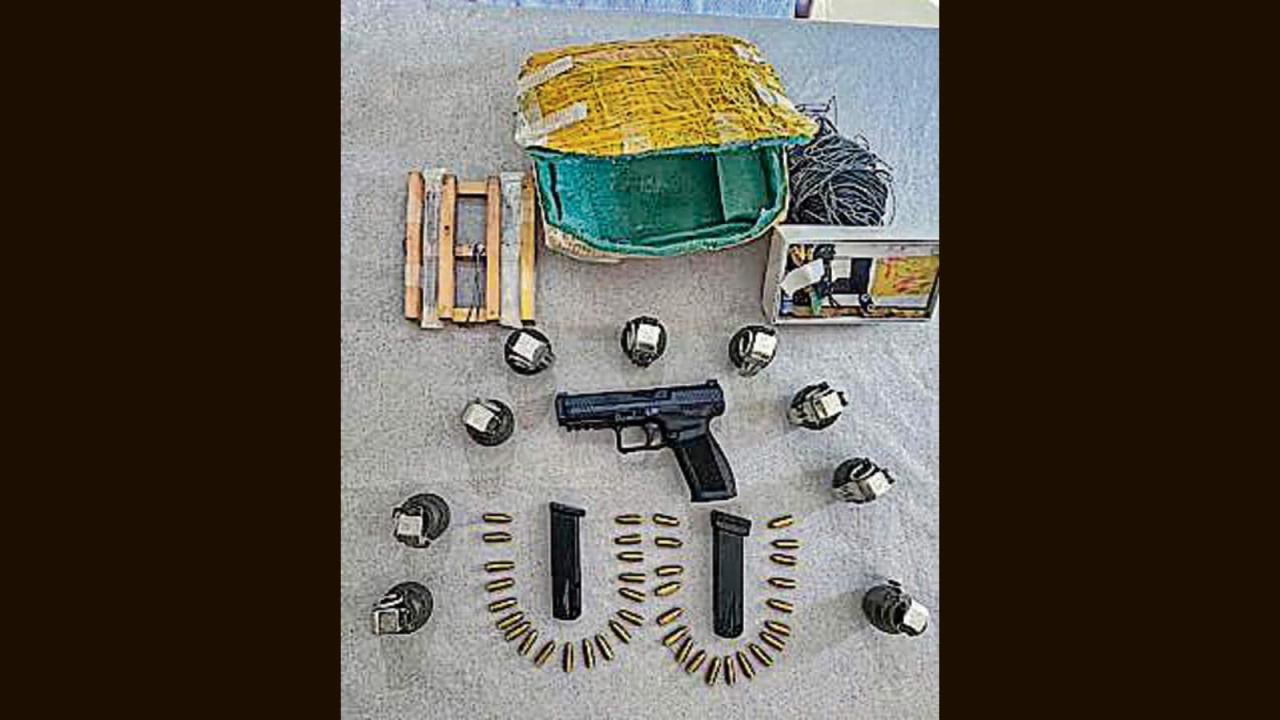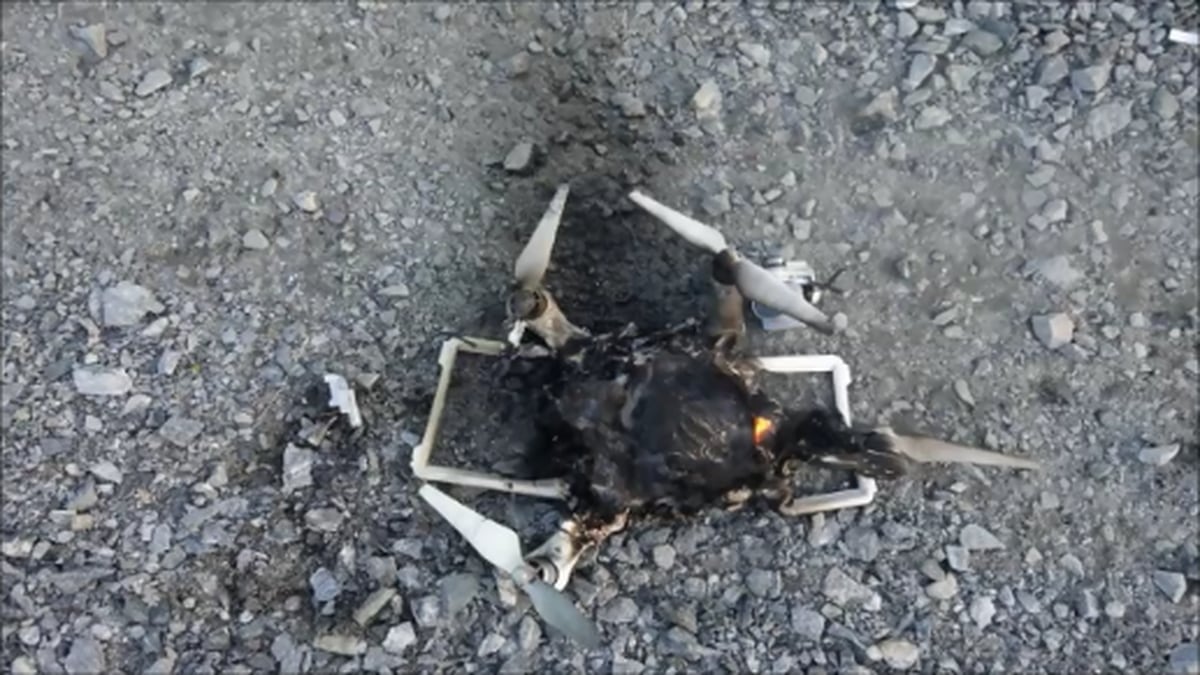Remington drone loads represent a crucial aspect of the burgeoning drone industry, encompassing the diverse payloads these aircraft can carry, the safety regulations governing their operation, and the technological advancements shaping their future capabilities. This exploration delves into the various Remington drone models, their payload capacities, and the types of loads they effectively transport. We will examine the impact of load weight on flight performance, considering factors like flight time, range, and maneuverability.
Finally, we’ll look ahead to future trends and technological innovations that promise to revolutionize Remington drone payload capabilities.
Understanding the nuances of Remington drone loads is vital for both operators and those seeking to utilize these aircraft for various applications. From precise agricultural spraying to efficient delivery systems, the effective management of payload weight and type directly impacts operational success and safety.
Remington Drone Payload Capabilities: Remington Drone Loads
Remington drones are known for their robust design and versatility, making them suitable for a wide range of applications. Understanding their payload capacity and the factors influencing it is crucial for safe and efficient operation. This article details Remington drone models, the types of loads they carry, safety regulations, and the impact of payload weight on flight performance, as well as future trends in this technology.
Remington Drone Models and Payload Capacity, Remington drone loads

Several Remington drone models cater to various payload requirements. The maximum payload capacity is significantly influenced by factors such as motor power, battery size, and airframe design. Heavier airframes generally support larger payloads but may compromise maneuverability and flight time.
Remington drone loads, while generally safe, highlight the importance of responsible drone operation. Incidents like the one described in this news report, nj drone shot down , underscore potential risks associated with unauthorized drone flights near sensitive areas. Understanding these risks is crucial when considering the payload capacity and operational parameters for Remington drone loads. Proper training and adherence to regulations are paramount.
| Model | Payload Capacity (kg) | Dimensions (approx.) | Notable Features |
|---|---|---|---|
| Remington RX-8 | 5 | 1.2m x 1.0m x 0.5m | High-torque motors, advanced stabilization system |
| Remington RX-12 | 10 | 1.5m x 1.2m x 0.6m | Larger battery capacity, extended flight time |
| Remington RX-20 | 20 | 2.0m x 1.5m x 0.8m | Heavy-duty construction, capable of carrying heavier equipment |
| Remington RX-5 | 2 | 0.8m x 0.7m x 0.4m | Compact and lightweight, ideal for smaller payloads |
The table above shows a clear progression in payload capacity with increasing model numbers. The RX-20, for instance, boasts a significantly higher payload capacity compared to the RX-5, reflecting the differences in motor power, battery capacity, and airframe design.
Types of Loads Carried by Remington Drones
Remington drones are used to transport a variety of payloads across various sectors. Understanding the characteristics of these loads is crucial for ensuring safe and efficient operation. The weight and size of the load directly impact flight performance and stability.
- Cameras and Imaging Sensors
- Environmental Monitoring Sensors
- Delivery Packages (small parcels)
- Specialized Scientific Equipment
| Application | Load Type | Drone Model | Benefits |
|---|---|---|---|
| Precision Agriculture | Multispectral Camera | Remington RX-8 | Improved crop monitoring and yield optimization |
| Search and Rescue | Thermal Imaging Camera | Remington RX-12 | Enhanced visibility in low-light conditions |
| Package Delivery | Small Parcel | Remington RX-5 | Fast and efficient delivery to remote locations |
Careful consideration must be given to weight distribution to maintain stability during flight. Improperly balanced loads can affect maneuverability and increase the risk of accidents.
Safety and Regulations Regarding Remington Drone Loads

Adhering to safety protocols and regulations is paramount when operating Remington drones with payloads. This checklist Artikels key safety measures to mitigate potential risks.
- Always verify the payload weight does not exceed the drone’s maximum capacity.
- Ensure the payload is securely fastened to prevent shifting during flight.
- Inspect the drone and payload for any damage before each flight.
- Comply with all local and national drone regulations.
- Maintain a safe distance from obstacles and people during operation.
- Always have a backup plan in case of emergencies.
Exceeding the payload limit can lead to motor failure, loss of control, and potential damage to the drone and surrounding property. Strict adherence to regulations and safety guidelines is crucial to prevent accidents and ensure responsible drone operation.
Impact of Load Weight on Remington Drone Flight Performance

Payload weight significantly affects various aspects of a Remington drone’s flight performance. Heavier loads directly impact flight time, range, and maneuverability. Energy consumption also increases proportionally with payload weight.
A graph depicting the relationship between payload weight and flight parameters (flight time, range, and maneuverability) would show a generally inverse relationship. The X-axis would represent payload weight (in kg), and the Y-axis would represent the respective flight parameter (flight time in minutes, range in kilometers, and a maneuverability index). The lines would demonstrate a downward trend as payload weight increases.
Strategies for optimizing payload weight include using lighter materials for the payload itself, minimizing unnecessary equipment, and employing efficient flight paths to reduce energy consumption.
Future Trends in Remington Drone Payload Capabilities
Advancements in materials science, battery technology, and drone design are poised to significantly impact Remington drone payload capabilities in the coming years. These developments will likely lead to increased payload capacity while maintaining or improving flight performance.
- Lightweight, high-strength composite materials will enable the construction of drones capable of carrying heavier loads without sacrificing maneuverability.
- Improved battery technology will lead to longer flight times, allowing for the transportation of heavier payloads over greater distances.
- More efficient motor designs will reduce energy consumption, extending flight time even with heavier payloads.
- Advanced autonomous navigation systems will enhance the precision and safety of drone operations, enabling the transport of more sensitive payloads.
The use of advanced materials like carbon fiber reinforced polymers (CFRP) and the development of high-energy-density batteries, such as solid-state batteries, are examples of technologies that could significantly increase payload capacity while enhancing flight performance. This would open new possibilities for the types of loads carried by Remington drones in various sectors, such as heavier scientific equipment for research or larger packages for commercial delivery services.
In conclusion, the efficient and safe operation of Remington drones hinges on a thorough understanding of their payload capabilities. From selecting the appropriate drone model for a specific load to adhering to safety regulations, every aspect contributes to successful missions. As technology advances, we can anticipate even greater payload capacities and innovative applications for Remington drones, pushing the boundaries of what’s possible in various industries.
The future of Remington drone technology promises increased efficiency, safety, and versatility, making them increasingly indispensable tools across a wide range of sectors.
Key Questions Answered
What is the warranty on Remington drone components?
Warranty periods vary depending on the specific component and model. Consult the manufacturer’s documentation for details.
How often should I calibrate my Remington drone’s sensors?
Remington drone loads present interesting logistical challenges, particularly concerning payload optimization. Understanding efficient drone operations is key, and studying companies like archer aviation , known for their innovative approaches, offers valuable insights. This knowledge can then be applied to improve the efficiency and safety of Remington’s drone load management strategies.
Sensor calibration frequency depends on usage and environmental conditions. Refer to the user manual for recommended calibration schedules.
Are there any restrictions on flying Remington drones near airports?
Yes, strict regulations govern drone operation near airports. Check with local aviation authorities for specific airspace restrictions.
What type of batteries are used in Remington drones, and how long do they last?
Battery type and flight time depend on the specific drone model and payload. Consult the specifications for each model.